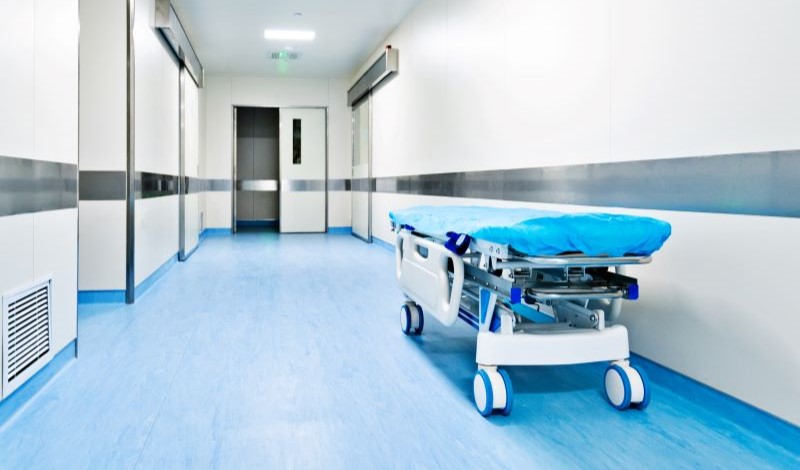
A Supreme Court decision reveals flaws in how we pay safety-net hospitals—and why reform is overdue.
In April, the U.S. Supreme Court decided Advocate Christ Medical Center v. Kennedy, a case that concerns how hospitals that treat a large share of low-income patients are paid by the Medicare program. Legally, this decision scrutinizes oft-litigated language in the Medicare statute. From a policy perspective, it highlights two issues. First, Medicare’s means for paying safety-net hospitals needs a refresh that regulatory tweaks and courts alone cannot deliver. Second, we have perpetuated a health care system in which low-income people are less profitable for hospitals to treat, a problem that will get worse in the coming years following the passage of the conservative-backed megalaw.
In 1986, Medicare started paying extra to hospitals that treat a large share of low-income patients on the belief that they demand, on average, more intensive and expensive care. To determine which hospitals receive these payments and how much—so-called disproportionate share hospitals (DSH)—Congress created a complex formula that has provoked decades of litigation, including the Supreme Court’s 2022 decision in Becerra v. Empire Health Foundation. This formula aggregates the days of care a hospital provides to low-income Medicare patients—the Medicare fraction—and to patients eligible for Medicaid but not Medicare—the Medicaid fraction. When the result is 15 percent or more of the total days of care, a hospital is eligible for “DSH payments.”
But the statutory language describing this formula leaves much to be desired. It defines the Medicare fraction as the share of a hospital’s Medicare patients who are entitled to Medicare and also “entitled to supplementary security income” (SSI). SSI, a federal program, provides cash benefits to low-income individuals who are disabled, blind, or elderly. In Empire Health, the Supreme Court considered what it means to be “entitled to Medicare.” The Court ultimately upheld the interpretation of the U.S. Department of Health and Human Services (HHS) that someone is entitled to Medicare if the individual is enrolled in the program, even if that person does not receive payment for care on the hospital day in question—for example, beneficiaries who have exhausted certain categories of Medicare benefits. This decision resulted in reduced DSH payments to hospitals.
In Advocate Christ, the Court considered the term “entitled” in a different context: what it means to be entitled to SSI. The Court, in a 7-2 opinion authored by Justice Amy Coney Barrett, agreed with HHS’s interpretation that an individual must have received an SSI cash payment in a month they were receiving inpatient treatment to be entitled to SSI. Justice Barrett explained that it was not enough to be enrolled in the SSI program for the year in question, distinguishing what it means to be “entitled to Medicare”—an insurance program—from what it means to be “entitled to supplementary security income”—a cash benefits program with monthly eligibility criteria. This interpretation means fewer days will be counted in the Medicare fraction, resulting in over a billion dollars less in DSH payments to safety-net hospitals for the years in question.
In a dissenting opinion, Justice Ketanji Brown Jackson, joined by Justice Sonia Sotomayor, argued that Justice Barrett misconstrued what it means to be eligible for SSI, urging instead that the SSI program should be thought of as insurance—an income guarantee for the year to help people stay afloat. Justice Jackson reflected on Congress’s purpose in using SSI as a proxy for low-income, medically complex patients and observed that fluctuations in a person’s earnings do not make them any less medically complex in a month when they earn just above the cash benefits threshold than in one when they earn just below it.
Justice Jackson’s dissent highlights the challenge of using a complex payment formula to encourage hospitals to care for low-income patients in a financially sustainable way. She observed that the interpretation favored by HHS and the majority leads to a result inconsistent with the DSH program’s intended purpose: to pay hospitals for treating higher-need patients. But the DSH formula is not a well-tailored means of achieving that goal and has become increasingly ill-suited to this purpose over time. In fact, after the DSH formula was established, research showed that the higher cost of treating low-income Medicare patients only justified, at most, 25 percent of these payments. Moreover, relying on the DSH formula risks undervaluing some hospitals that provide critical safety-net functions. And the DSH formula determines the eligibility of hospitals for other subsidies, including discounted prescription drugs under the 340B drug pricing program, increasing reliance on a formula ill-tailored to subsidize hospitals that are struggling financially because they disproportionately treat low-income patients.
The Medicare Payment Advisory Commission (MedPAC)—a nonpartisan, independent legislative branch agency that provides Medicare analysis and policy advice—has advocated a DSH formula that better targets hospitals treating low-income beneficiaries and, as a result, facing financial instability. MedPAC suggests that the formula must take into account two categories of patients who can pose a financial threat to hospitals: the uninsured and Medicare beneficiaries. Updating how DSH is calculated, whether by adopting MedPAC’s proposal or by pursuing alternative solutions, may not eliminate litigation, but an improved methodology could, at least, better justify the litigation costs it generates.
Most importantly, the larger issue underlying this case is the fact that economic well-being is correlated with health. The reality of a system that leaves low-income people more likely to be uninsured or to have public health insurance means that hospitals that treat more low-income patients are disproportionately burdened both by medical vulnerability and lower reimbursement rates.
Over the past fifteen years, the Patient Protection and Affordable Care Act (ACA) closed this gap through its Medicaid expansion provisions and its subsidization of private health insurance. This year likely represents a high-water mark, with 45 million people receiving health insurance from Medicaid and ACA marketplaces. As a result, hospitals saw fewer uninsured patients, and studies have shown that positive health outcomes are associated with expanding access to affordable coverage. The ACA helps connect people to better care, earlier and ensures that hospitals are paid for the care they provide. Although expanding policies like the ACA may not eliminate the need for subsidies, they can meaningfully reduce it.
Unfortunately, this Congress has catalyzed the opposite with its recently enacted megalaw that will wipe out a share of the ACA coverage gains, especially for the lowest-income beneficiaries. It is estimated to reduce healthcare spending by one-trillion dollars over the next decade, mostly from Medicaid by adding policies like work requirements that result in confusion and inaccurate losses in coverage. Hospitals will be paid less and treating more uninsured patients. When our elected representatives perpetuate income-based health gaps and make it harder for hospitals to get paid, complex workarounds become the means to help the hospitals that provide the most care to low-income people stay afloat. So long as these expensive workarounds remain critical for these hospitals’ revenue, cases like Advocate Christ will continue to populate the Supreme Court’s docket.
This essay is part of a series, titled “The Supreme Court’s 2024-2025 Regulatory Term.”




